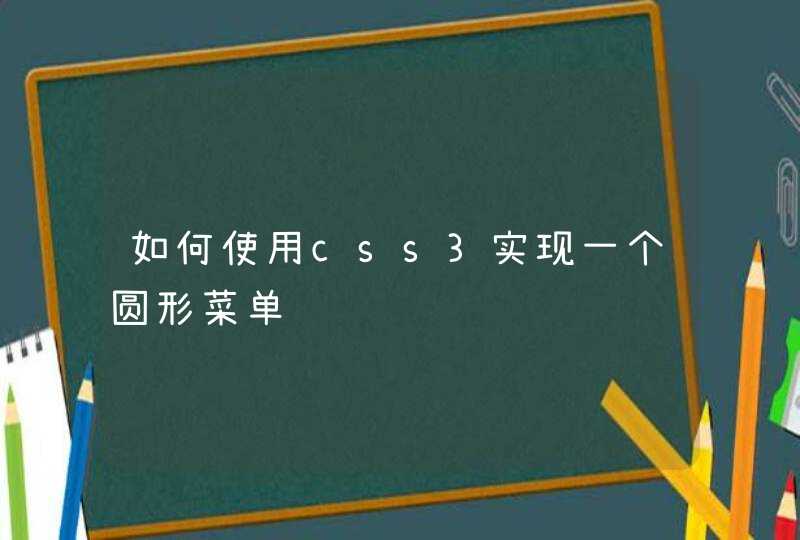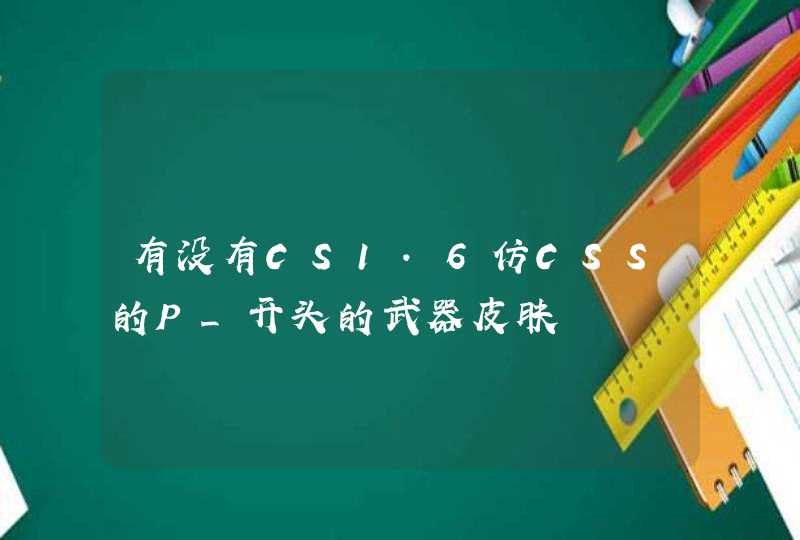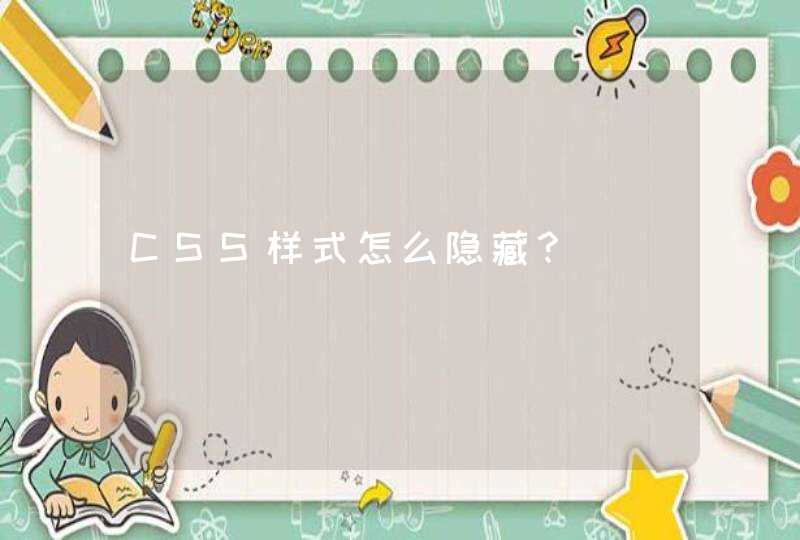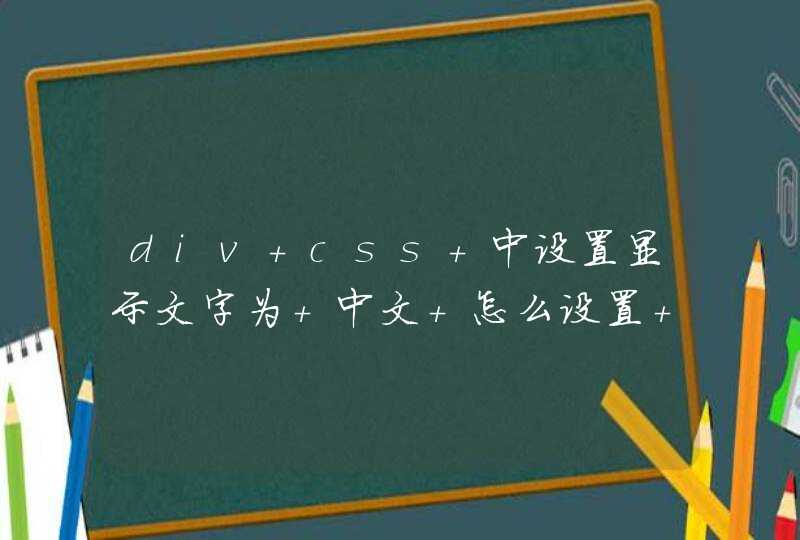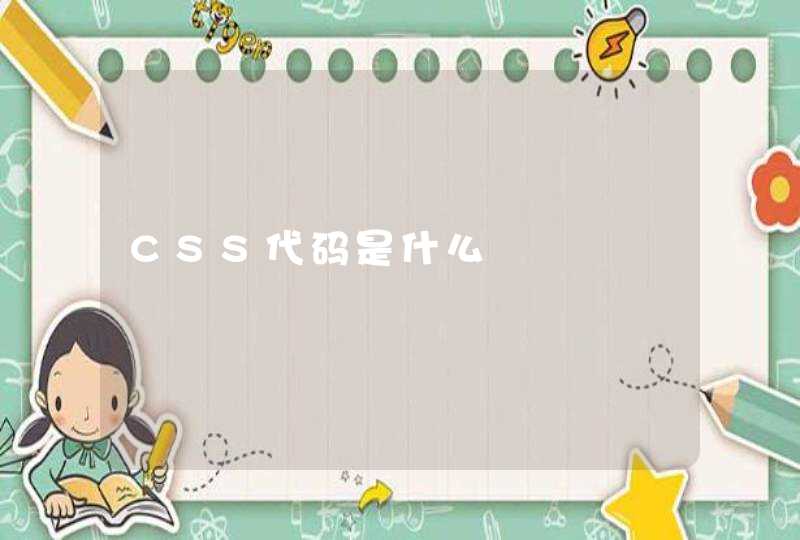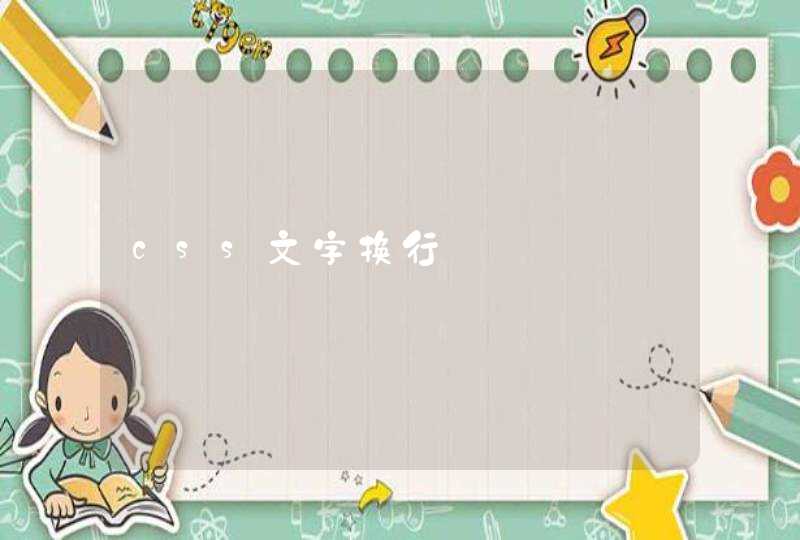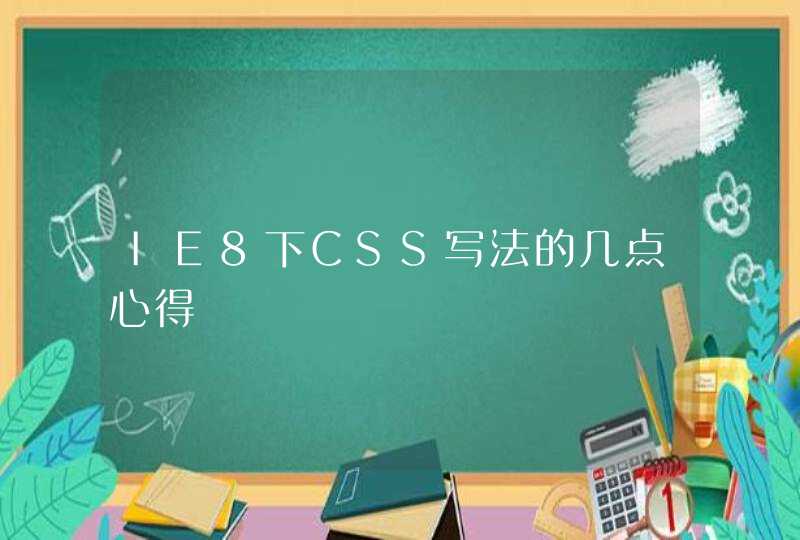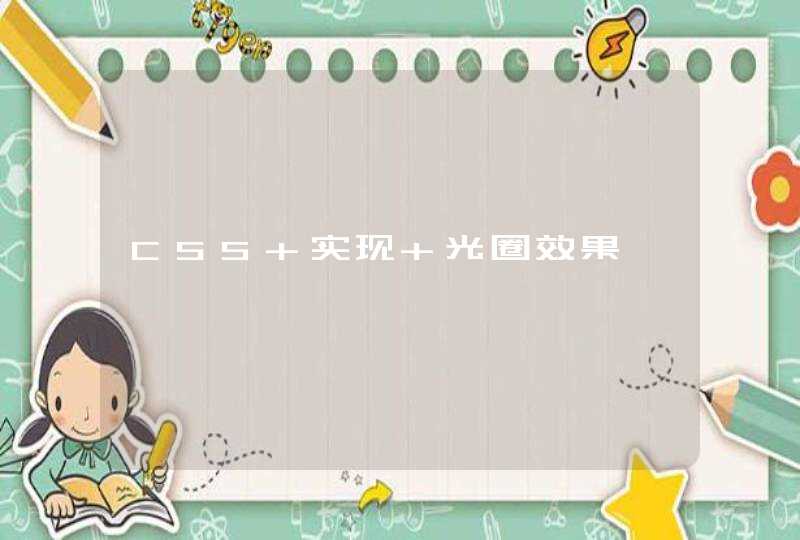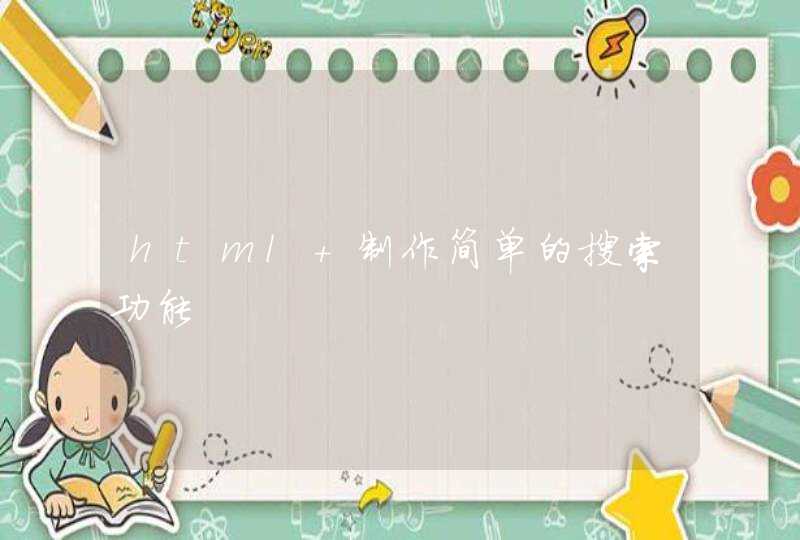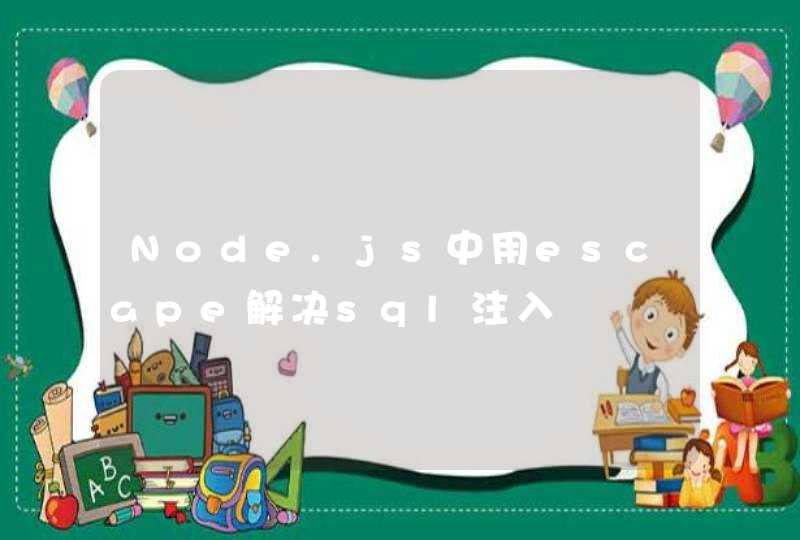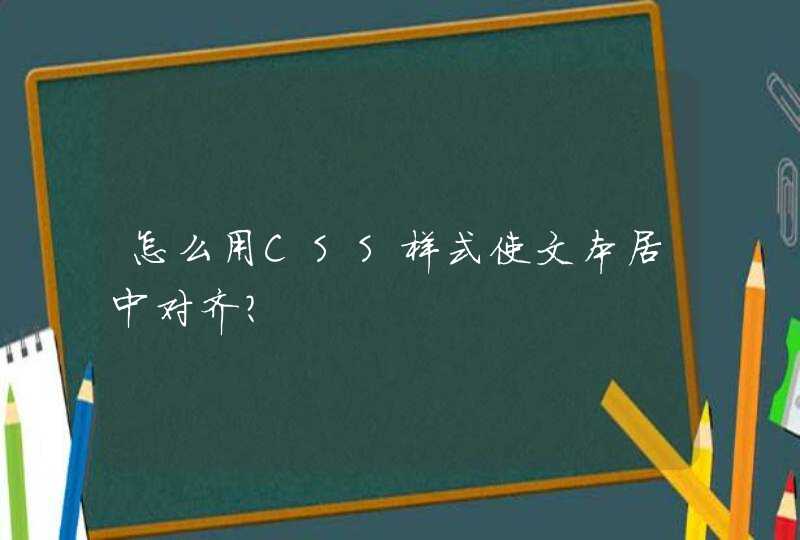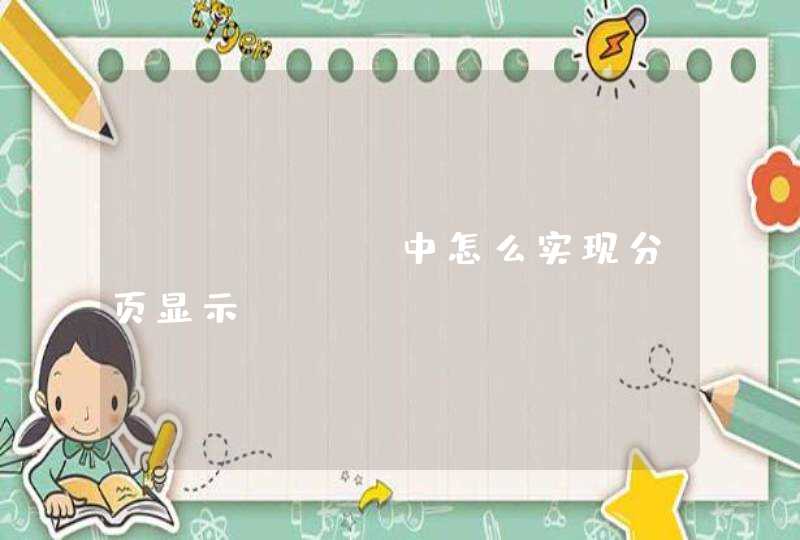
Navy SEAL teams and structure
SEALs carrying MP5 submachine guns
SEALs carrying MP5 submachine guns
SEAL teams are organized into two groups: Naval Special Warfare Group One (West Coast), and Naval Special Warfare Group Two (East Coast), which come under the command of Naval Special Warfare Command, stationed at NAB Coronado, California. As of 2006, there are eight confirmed Navy SEAL Teams. The original SEAL Teams in the Vietnam War were separated between West Coast (Group ONE) and East Coast (Group TWO) SEALs. The current SEAL Team deployments include Teams 1, 2, 3, 4, 5, 7, 8, and 10. The Teams deploy as Naval Special Warfare Squadrons and can deploy anywhere in the world. Squadrons will normally be deployed and fall under a Joint Task Force (JTF) or a Combined Joint Special Operations Task Force (CJSOTF) as a Special Operations Task Force (SOTF)
A SEAL Team has a Staff Headquarters element and three 40-man Task Units. Each Task Unit consist of a Headquarters element consisting of a Task Unit Commander (O-5), a Task Unit Senior Enlisted (E-8), a Targeting/Operations Officer (O-2/3) and a Targeting/Operations Leading/Chief Petty Officer (E-6/7). Under the HQ element are two SEAL platoons of 16 men (2 officers, 14 enlisted SEALs and sometimes 2 enlisted EOD Operators making a platoon of 18)a company-sized combat support staff (CSS) consisting of staff N-codes (the Army uses S-codes and the Marine Corps uses J-Codes)N1 Administrative support, N2 Intelligence, N3 Operations, N4 Logistics, N5 Plans and Targeting, and N8 Air/Medical. Each Task Unit can be easily split into 4 squads or eight 4-man fire teams for operational purposes. The size of each SEAL “Team” with Task Units and support staff is approx. 300 personnel. The typical SEAL platoon of 16 men has an OIC (Officer in Charge, usually an O-3), an AOIC (Assistant Officer in Charge, usually an O-2), a platoon chief (E-7), an LPO (Leading Petty Officer, E-6) and others ranging from E-6 to E-4 (most are E-5). Occasionally there is a "third O". Usually the third O is an O-1 on his first operational deployment. This makes the platoon consist of 3 officers and 13 enlisted personnel. The core leadership in the Task Unit/Troop and Platoon are the Commander/OIC and the Senior Enlisted NCO (Senior Chief/Chief).
Task Unit core skills consist of: Sniper, Breacher, Communicator, Maritime/Engineering, Close Air Support, Corpsman, Point-man/Navigator, Primary Driver/Navigator (Rural/Urban/Protective Security), Heavy Weapons Operator, Sensitive Site Exploitation, Air Operations Master, Lead Climber, Lead Diver/Navigator, Interrogator, Explosive Ordnance Disposal, Technical Surveillance, and Advanced Special Operations.[citation needed]
Each team is commanded by a Navy Commander (O-5), and has a number of operational SEAL platoons and a headquarters element. In 1987, SEAL Team 6 was renamed to the United States Navy Special Warfare Development Group, although members are still frequently referred to informally as "SEAL Team 6". Naval Amphibious Base Little Creek, a naval base in Virginia Beach, Virginia, is home to SEAL Teams 2, 4, 8 and 10.
There are also two SDV units, SDVT-1 located in Pearl Harbor, HI, and SDVT-2 in Virginia. SDV Teams are SEAL teams with an added underwater delivery capability.
[edit] Training
Entering training to become a Navy SEAL is voluntary. Anyone can volunteer, and officers and enlisted men train side by side. In order to enter SEAL training, however, they do have to meet certain requirements. Those wishing to volunteer for SEAL training have to:
* be an active-duty member of the United States Navy
* be 28 or younger (although waivers for 29- and 30-year-olds are possible)
* possess uncorrected vision no worse than 20/40 in one eye and 20/70 in the other eye correctable to 20/20 through contacts or glasses (corrective surgery PRK is also possible), there are waivers for colorblindness
* be a U.S. citizen
* pass the Armed Services Vocational Aptitude Battery (ASVAB) test
Underwater Demolition Team jumps over the side from boat.
Underwater Demolition Team jumps over the side from boat.
SEALs in woodlands operation.
SEALs in woodlands operation.
SEAL recruit training has these components, lasting 48 weeks (or 11 months):
* 25 weeks Basic Underwater Demolition/SEAL (BUD/S) training at the Naval Special Warfare Center in Coronado, California near San Diego.
* 1 week of static line jump training, followed by 3 weeks of Military Free Fall (MFF) Qualification training at Tactical Air Operations in Otay, CA.
* At Coronado, 19-week SEAL Qualification Training (SQT).
After this, the trainee is officially named a SEAL.[1]
[edit] Screening
Assignment to BUD/S is conditional on passing the PST, which requires the following minima:
* 500-yard (457 m) swim using breast or side stroke in under 12:30
* At least 42 push-ups in 2 minutes
* At least 50 sit-ups in 2 minutes
* At least 6 pull-ups from a dead hang (no time limit)
* Run 1.5 miles (2.4 km) in running shoes and shorts in under 11:00
* Members’ vision must be no worse than 20/200 in both eyes. Vision must be correctable to 20/20. SEAL candidates may qualify for PRK surgery to correct their vision
Again, the above are the minimum requirements necessary to qualify for BUD/S. Prospective trainees are expected to far exceed these minimums. Competitive scores are as follows:
* 500-yard swim using breast or combat side stroke in 10:00 minutes
* 79 push-ups in 2 minutes
* 79 sit-ups in 2 minutes
* 11 pull-ups from a dead hang (no time limit)
* Run 1.5 miles in boots and long pants in 10:20
[edit] Selection (BUD/S)
Upon arrival at Naval Special Warfare Command, check-ins for BUD/S are immediately placed into a pre-indoctrination phase of training known as 'PTRR', or Physical Training Rest and Recuperation. PTRR is also where all of the 'roll-backs' are placed while waiting to be put into a class. Once additional medical screening is given, and after enough BUD/S candidates arrive for the same class, organized physical training begins.
BUD/S consists of a five-week 'Indoctrination Course', known as INDOC, followed by three phases, covering physical conditioning (eight weeks), diving (eight weeks), and land warfare (nine weeks) respectively. Officer and enlisted personnel go through the same training program, and it is designed to develop and test their stamina, leadership and ability to work as a team.
In the first phase BUD/S students are divided into 'Boat Crews' which can consist of six to eight men. However, although some exercises will be undertaken as boat crews (such as 'log PT', which requires boats crews to exercise with logs that weigh 150 pounds (68 kg) each, and 'Surf Passage', where boat crews must navigate the Pacific surf in inflatable boats), the first phase of BUD/S also consists of a series of demanding individual physical tests including frequent sets of push-ups and sit-ups, ocean swims and timed four mile (6.4 km) runs in boots and long trousers, in soft sand (to be completed in 32 minutes). The first phase is most well known for 'Hell Week', which usually occurs duritly drop on request (DOR), from the course. The tradition of DOR consists of dropping one's helmet liner next to a pole with a brass ship’s bell attached to it, and ringing the bell three times (the bell was taken away for a few years in the 1990's...then later brought back). Classes typically lose around 70–80% of their trainees — either due to DORs or injuries sustained during training, but it is not always easy to predict which of the trainees will DOR during BUD/S. Winter class dropout rates are usually higher due to the cold. SEAL instructors say that in every class, approximately 10 percent of the students simply do not have the physical ability to complete the training. Another 10–15 percent will definitely make it through unless they sustain a serious physical injury. The other 75–80 percent is 'up for grabs' depending on their motivation. There has been at least one BUD/S class where no one has completed the program. Most trainees are eliminated prior to completion of Hell Week, but trainees will continue to DOR in the second phase or be forced to leave because of injuries, or failing either the diving tests or the timed runs and swims. In fact, the instructors tell the students at the very start of BUD/S that the vast majority of them will not successfully complete the course and that they are free at any time to drop out (via the bell) if they do not believe they can complete the course. A trainee who DOR's from First Phase before the completion of Hell Week and reapplies to the BUD/S program must start from the beginning of INDOC (if they are accepted). Any BUD/S trainee who drops on request after Hell Week goes through the same out-processing as a trainee who quits before or during Hell Week. If they reapply to BUD/S they would stand a very good chance of being accepted, but they must complete Hell Week again. However, those who have completed Hell Week, but cannot continue training due to injury are usually rolled back into the next BUD/S class after Hell Week, or the respective phase in which they were rolled. There are many SEALs who have attempted BUD/S two or even perhaps three or more times before successfully completing training. There is only one person who has successfully completed Hell Week three times. He completed training after his third application to BUD/S[citation needed].
[edit] Qualification
After BUD/S Selection students attend SEAL Qualification Training (SQT) which is the NEC 5326 awarding schoolhouse of NSW. SQT is an arduous 6-month program consisting of the basic skillsets required to join a SEAL Team. The operators attend a sequential course consisting of: TACAIR (static line and Freefall), SERE, Tactical Medicine, Communications, Cold Weather/Mountaineering, Maritime Operations, Combat Swimmer, Land Warfare (small unit tactics, light and heavy weapons, demolitions), and Close Quarters Combat.
Upon completion of SQT the students are awarded the Navy SEAL Trident, assigned to a SEAL Team and are deployable.
[edit] Sustainment (PRODEV/ULT/SIT)
Upon assignment to a team, the new SEALs will be assigned to a Platoon as an Operator. Once in a Task Unit/Platoon, the Operator will train for an 18-month period (work-up) before a six month active deployment which is followed by six month 'stand down' period. After this has been completed, they are officially considered SEALs.
Phase One of a work-up is called the Professional Development Phase (PRODEV). PRODEV is a 6-month block where Operators gain critical skills required by the Task Units/Platoons for deployment. Operators can expect to acquire the following core skills:
* Sniper
* Breacher
* Surreptitious Entry
* Electronic and Media Exploitation
* Technical Surveillance
* High Threat Protective Security (PSD)
* Advanced Weapons Training
* Advanced Driving Skills (Urban/Rural/Security)
* Advanced Climbing/Rope Skills
* Advanced Air Operations: HALO/Jumpmaster/Parachute Rigger and Packer
* Diving Supervisor
* Range Safety Officer
* Instructor School
* Leadership School
* Foreign Weapons
* UAV Operator
* Language School
* Advanced Special Operations
Phase Two of a work-up is called Unit Level Training (ULT). ULT is a 6-month block where the Task Units train in their core mission areas (Land Warfare, Close Quarters Combat, Urban Warfare, Maritime Interdiction, Combat Swimmer, Long Range Interdiction, Air Operations, Special Reconnaissance and Maritime Operations, Advanced Marksmanship/Heavy Weapons).
Phase Three of a work-up is called Squadron Integration Training (SIT). SIT is the last 6-month block where the Task Unit conducts advanced training as well as integrates all supporting attachments (N-codes (N1-N8), Special Boat Squadrons, Medical Teams, EOD, Interpreters, Intelligence/HUMINT Teams, Cryptological Support Teams, etc). A final Certification Exercise is conducted with the entire SEAL Team to synchronize Task Unit operations under the Task Group umbrella. Following CERTEX, a SEAL Team becomes a SEAL Squadron and deploys to the area of operations for 6-10 months. The Task Units will be assigned an area of operations and work under a Squadron Headquarters Unit called a Task Group.
[edit] Area of operations
Navy SEAL team member fires an M60E3 from the shoulder during a field training exercise in 1987.
Navy SEAL team member fires an M60E3 from the shoulder during a field training exercise in 1987.
[edit] Deserts
SEAL operators must be ready for desert deployment especially with the current Iraq and Afghanistan wars. Long distances in the desert environment are travelled in Humvees or Desert Patrol Vehicles. The harsh desert environment provides little to no concealment, so blending in is more difficult.
[edit] Arctic
Arctic missions can call for a lot of equipment and skill. The SEALs layer their clothes, travel by night, sleep in snow caves and carry 3 lines of gear and often pull a sled. The First Line gear includes: survival gear, including signaling device, emergency rations, spare parts, E &E kit, map &compass, flashlight and the side arm. Second Line gear includes equipment carried on the operator's web gear, including primary weapon and ammo, short-term supplies (should the rucksack be ditched), grenades, water, med kit, smokes, flares, carabiners and other miscellaneous gear. Finally, the operator's Third Line of gear includes that equipment stored in the rucksack, including sleeping bag, ground pad, tent, food for the duration of the operation, gas stove &utensils, dry socks, clothing layers and a water container. Mountaineering gear will also be divided among the squad and carried with the third line, and each member will carry his personal ice ax and snowshoes attached to his rucksack. Other Arctic operations include extreme cold water diving, kayaking, skiing, and snowmobiling.
[edit] Woodland/jungle
The woods and jungles are difficult to maneuver in. In the jungles SEALs will typically carry a machete to clear foliage quickly and easily and a shotgun for close combat. Patrols in the jungle will normally take longer than usual because of the difficulties in maneuvering.
[edit] Mountaineering/climbing
An operator will carry his climbing gear in the third line rucksack for use if and when needed. The common gear, such as ropes and carabineers, are split among the squad to distribute the weight among the Team. Each individual will carry his own sit harness.The lead or point climber is the most experienced climber in the squad. He will climb the face free of any protection (i.e.: chalks, pitons, top rope etc.) and set the route. Once at the top he will anchor a top rope and let it down to the squad below. He will then set security while the climbers ascend the rope. A belay man will assist from below or above depending on the type of climb. The gear will be hauled up on a Jumar along with the climber. This is dangerous work and emphasis is on speed and stealth. The lead relies on his strength and free climb training and experience to find the best route in the darkness.
[edit] Sea
SEALs can insert, extract, and perform underwater attacksthis is what distinguishes them from other Special Operations Forces. The SEALs have a variety of equipment and water crafts that help them perform water missions. (see: SEAL Delivery Vehicle, Advanced SEAL Delivery System)
[edit] Air
SEALs utilize several different forms of insertion from the air. Static Line and Free Fall Parachuting, Fast-Rope and Rappel Operations, or simply jumping out of a helicopter into the ocean with a Zodiac inflatable raft. SEALs are also extracted by air transportation on occasions. Also SEALs are inserted into missions through a free-fall technique known as HALO (High Altitude Low Open) where they jump from as high as 35,000 feet and open their parachutes at about 3,000 feet. In most clandestine missions requiring air insertion, however, they arrive by way of HAHO (High Altitude High Opening) drops, normally opening at 10,000 feet. This helps the drop plane to evade detection by releasing the team as far as 30 miles before the target area. This form of insertion is also undetected by enemy radar.
#01 及更高的号 为计算机演示而扫描的一系列电影的图片文件编号方法$$$ OS/2用来跟踪档案文件
@@@ 用于安装过程中的屏幕文件和用于Microsoft Codeview for C这样的应用程序的指导文件 。
000-999 用于为老版本(或备份)文件编号(比如:被安装程序改变的CONFIG.SYS文件);又可用于为小范围的PC应用程序的多个用户相关数据文件编号
12M Lotus 1-2-3 97 SmartMaster文件
123 Lotus 1-2-3 97文件
2D VersaCAD的2维绘画文件
2GR 在Windows之下的VGA图形驱动程序/配置文件
3GR 在Windows之下的VGA图形驱动程序/配置文件
3D VersaCAD的3维绘画文件
3DM 3D NURBS建模器,Rhino
3DS 3D Studio(DOS下)格式文件
386 在386或更高级处理器上使用的文件
4GE Informix 4GL编译后代码
4GL Informix 4GL源代码
669 Composer 669;UNIX Composer音乐模型文件;669磁道模块
A 对象代码库文件
AAM Authorware shocked文件
AAS Authorware shocked包
ABF Adobe二进制屏幕字体
ABK CorelDRAW自动备份文件
ABS 该类文件有时用于指示一个摘要(就像在一篇有关科学方面的文章的一个摘要或概要,取自abstract)
ACE Ace压缩档案格式
ACL CorelDRAW 6键盘快捷键文件
ACM Windows系统目录文件
ACP Microsoft office助手预览文件
ACR 美国放射医学大学文件格式
ACT Microsoft office助手文件
ACV OS/2的驱动程序,用于压缩或解压缩音频数据
AD After Dark屏幕保护程序
ADA Ada源文件(非-GNAT)
ADB Ada源文件主体(GNAT);HP100LX组织者的约定数据库
ADD OS/2用于引导过程的适配器驱动程序
ADF Amiga磁盘文件
ADI AutoCAD设备无关二进制绘图仪格式
ADM After Dark多模块屏幕保护;Windows NT策略模板
ADP FaxWork用于传真调制解调器的交互安装文件;Astound Dynamite文件
ADR After Dark随机屏幕保护;Smart Address的地址簿
ADS Ada源文件说明书(GNAT)
AFM Adobe的字体尺度
AF2 ABC的FlowChat文件
AF3 ABC的FlowChat文件
AI Adobe Illustrator格式图形
AIF 音频互交换文件,Silicon Graphic and Macintosh应用程序的声音格式
AIFF 音频互交换文件,Silicon Graphic and Macintosh应用程序的声音格式
AIFC 压缩AIF
AIM AOL即时信息传送
AIS ACDSee图形序列文件;Velvet Studio设备文件
AKW RoboHELP的帮助工程中所有A-关键词
ALAW 欧洲电话音频格式
ALB JASC Image Commander相册
ALL 艺术与书信库
AMS Velvet Studio音乐模块(MOD)文件;Extreme的Tracker模块文件
ANC Canon Computer的调色板文件,包含一系列可选的颜色板
ANI Windows系统中的动画光标
ANS ANSI文本文件
ANT SimAnt For Windows中保存的游戏文件
API Adobe Acrobat使用的应用程序设计接口文件
APR Lotus Approach 97文件
APS Microsoft Visual C++文件
ARC LH ARC的压缩档案文件
ARI Aristotle声音文件
ARJ Robert Jung ARJ压缩包文件
ART Xara Studio绘画文件;Canon Crayola美术文件;Clip Art文件格式;另一种光线跟踪格式;AOL使用的用Johnson—Grace压缩算法压缩的标记文件
ASA Microsoft Visual InterDev文件
ASC ASCⅡ文本文件;PGP算法加密文件
ASD Microsoft Word的自动保存文件;Microsoft高级流媒体格式(microsoft advanced streaming format,ASF)的描述文件;可用NSREX打开 Velvet Studio例子文件
ASE Velvet Studio采样文件
ASF Microsoft高级流媒体格式文件
ASM 汇编语言源文件,Pro/E装配文件
ASO Astound Dynamite对象文件
ASP 动态网页文件;ProComm Plus安装与连接脚本文件;Astound介绍文件
AST Astound多媒体文件;ClarisWorks“助手”文件
ASV DataCAD自动保?***?
ASX Cheyenne备份脚本文件;Microsoft高级流媒体重定向器文件,视频文件
ATT AT Group 4位图文件
ATW 来自个人软件的Any Time Deluxe For Windows个人信息管理员文件
AU Sun/NeXT/DEC/UNIX声音文件;音频U-Law(读作“mu-law”)文件格式
AVB Computer Associates Inoculan反病毒软件的病毒感染后文件
AVI Microsoft Audio Video Interleave电影格式
AVR Audio Visual Research文件格式
AVS 应用程序可视化格式
AWD FaxVien文档
AWR Telsis数字储存音频文件扩展名格式
Axx ARJ压缩文件的分包序号文件,用于将一个大文件压至几个小的压缩包中(xx取01-99的数字)
A3L Authorware 3.x库文件
A4L Authorware 4.x库文件
A5L Authorware 5.x库文件
A3M Authorware Macintosh未打包文件
A4M Authorware Macintosh未打包文件
A4P Authorware无运行时间的打包文件
A3W 未打包的Authorware Windows文件
A4W 未打包的Authorware Windows文件
A5W 未打包的Authorware Windows文件
BAK 备份文件
BAS BASIC源文件
BAT 批处理文件
BDF West Point Bridger Designer文件
BFC Windows 95 Briefcase文档
BG Backgammon For Windows下的游戏文件
BGL Microsoft Flight Simulator(微软飞行模拟器)的视景文件
BI 二进制文件
BIF Group Wise的初始化文件
BIFF XLIFE 3D格式文件
BIN 二进制文件
BK 有时用于********版本
BK$ 有时用于********版本
BKS IBM BookManager Read书架文件
BMK 书签文件
BMP Windows或OS/2位图文件
BMI Apogee BioMenace数据文件
BOOK Adobe FrameMaker Book文件
BOX Lotus Notes的邮箱文件
BPL Borlard Delph 4打包库
BQY BrioQuery文件
BRX 用于查看多媒体对象目录的文件
BSC MS Developer Studio浏览器信息文件
BSP Quake图形文件
BS1 Apogee Blake Stone数据文件
BS_ Microsoft Bookshelf Find菜单外壳扩展名
BTM Norton 应用程序使用的批处理文件
BUD Quicken的备份磁盘
BUN CakeWalk 声音捆绑文件(一种MIDI程序)
BW SGI黑白图像文件
BWV 商业波形文件
BYU BYU的电影文件格式
B4 Helix Nuts and Bolts文件
C C代码文件
C0l 台风波形文件
CAB Microsoft压缩档案文件
CAD Softdek的Drafix CAD文件
CAL CALS压缩位图;日历计划表数据
CAM Casio照相机格式
CAP 压缩音乐文件格式
CAS 逗号分开的ASCⅡ文件
CAT Quicken使用 的IntellCharge分类文件
CB Microsoft干净引导文件
CBI 二进制卷格式文件(用于IBM大型机系统)
CC Visual dBASE用户自定义类文件
CCA cc:邮件文件
CCB Visual Basic动态按钮配置文件
CCF 多媒体查看器配置文件,用于OS/2
CCH Corel图表文件
CCM Lotus cc:邮箱(例如“INBOX.CCM”)
CCO CyberChat数据文件
CCT Macromedia Director Shockwave投影
CDA CD音频轨道
CDF Microsoft频道定义格式文件
CDI Philip的高密盘交互格式
CDM Visual dBASE自定义数据模块文件
CDR CorelDRAW绘图文件;原始音频CD数据文件
CDT CorelDRAW模板
CDX CorelDRAW压缩绘图文件;Microsoft Visual FoxPro索引文件
CEL CIMFast事件语言文件
CER 证书文件(MIME x-x509-ca-cert)
CFB Compton的多媒文件
CFG 配置文件
CFM CotdFusion模板文件;Visual dBASE Windows用户定制表单
CGI 公共网关接口脚本文件
CGM 计算机图形元文件
CH OS/2配置文件
CHK 由Windows磁盘碎片整理器或磁盘扫描保存的文件碎片
CHM 编译过的HTML文件
CHR 字符集(字体文件)
CHP Ventura Publisher章节文件
CHT ChartViem文件;Harvard Graphics矢量文件
CIF Adaptec CD 创建器 CD映像文件
CIL Clip Gallery下载包
CIM SimCity 2000文件
CIN OS/2改变控制文件用于跟踪INI文件中的变化
CK1 iD/Apogee Commander Keen 1数据文件
CK2 iD/Apogee Commander Keen 2数据文件
CK3 iD/Apogee Commander Keen 3数据文件
CK4 iD/Apogee Commander Keen 4数据文件
CK5 iD/Apogee Commander Keen 5数据文件
CK6 iD/Apogee Commander Keen 6数据文件
CLASS Java类文件
CLL Crick Software Clicker文件
CLP Windows 剪贴板文件
CLS Visual Basic类文件
CMD Windows NT,OS/2的命令文件;DOS CD/M命令文件;dBASEⅡ程序文件
CMF Corel元文件
CMG Chessmaster保存的游戏文件
CMP JPEG位图文件;地址文档
CMV Corel Move动画文件
CMX Corel Presentation Exchange图像
CNF Telnet,Windows和其他其内格式会发生改变的应用程序使用的配置文件
CNM Windows应用程序菜单选项和安装文件
CNQ Compuworks Design Shop文件
CNT Windows(或其他)系统用于帮助索引或其他目的内容文件
COB TrueSpace 2对象文件
COD Microsoft C编译器产生的可显示机器码/汇编代码文件,其中附有源C代码作为注释
COM 命令文件(程序)
CPD Corel Print Office文件(图形)
CPD 传真覆盖文档
CPE 传真覆盖文档
CPI Microsoft MS-DOS代码页信息文件
CPL 控制面板扩展名,Corel颜色板
CPO Corel打印存储文件
CPP C++代码文件
CPR Corel提供说明书文件
CPT Corel 照片-绘画图像
CPX Corel Presentation Exchange压缩图形文件
CRD Windows Cardfile文件
CRP Corel 提供的运行时介绍文件;Visual dBASE自定义报表文件
CRT 认证文件
CSC Corel脚本文件
CSP PC Emcee On_Screen图像
CSS 瀑布式表格文件
CST Macromedia Director Cast文件
CSV 逗号分隔的值文件
CT Scitex CT位图文件;Paint Shop Pro Grapic编辑器文件
CTL 通常用于表示一个包含控件信息的文件;FaxWork用它来保持有关每个传真收到或发出的信息
CUE Microsoft提示牌数据文件
CUR Windows光标文件
CUT Dr Halo位图文件
CV Corel版本的档案文件;Microsoft CodeView信息屏幕文件
CWK ClarisWorks数据文件.
CWS ClarisWorks模块
CXT Macromedia Director受保护的(不可编辑的)投影文件
CXX C++源代码文件
DAT 数据文件;WrodPerfect合并数据文件;用于一些MPEG格式的文件
DB Borland的Paradox 7表
DBC Microsoft Visual FoxPro数据库容器文件
DBF dBASE文件,一种由Ashton-Tate创建的格式,可以被ACT!、Lipper、FoxPro、Arago、Wordtech、Xbase和类似数据库或与数据库有关产品识别;可用数据文件(能被Excel 97打开);Oracle 8.1.x表格空间文件
DBX DataBearn图像;Microsoft Visual FoxPro表格文件
DCM DCM模块格式文件
DCR 冲击波文件
DCS 桌面颜色分隔文件
DCT Microsoft Visual FoxPro数据库容器
DCU Delphi编译单元文件
DCX Microsoft Visual FoxPro数据库容器;基于PCX的传真图像;宏
DC5 DataCAD绘图文件
DDF Btrieve或Xtrieve数据定义文件,它包含用于描述Btrieve或Xtrieve文件的元数据
DDIF Digital Equipment或 Compaq格式,用于保存他们图像与字处理文档
DEF SmartWareⅡ数据文件;C++模块定义文件
DEFI Oracle 7 卸载脚本文件
DEM 用于表示数字高度模型的USGS基准的文件
DER 认证文件
DEWF Macintosh Sound Cap/Sound Edit录音设备格式
DGN Macintosh 95 CAD绘图文件
DIB 设备无关位图
DIC 目录
DIF 可进行数据互换的电子表格
DIG DigiLink格式;Sound DesignerⅠ音频文件
DIR MacromediaDirector文件
DIZ 描述文件
DLG C++对话框脚本文件
DLL 动态链接库
DLS 可下载声音文件
DMD Visual dBASE数据模块文件
DMF X-Trakker音乐模块(MOD)文件
DOC FrameMaker或FrameBuilder文档;Word Star文档、Word Perfect文档、Microsoft Word文档;DisplayWrite文档
DOT Microsoft Word文档模板
DPL Borland Delph3压缩库
DPR Borland Delphi工程头文件
DRAW Acorn的基于对象的矢量图像文件
DRV 驱动程序
DRW Micrografx Designer/Draw;Pro/E绘画文件
DSF Micrografx Designer VFX文件
DSG DOOM保存的文件
DSM Dynamic Studio音乐模块(MOD)文件
DSP Microsoft Developer Studio工程文件
DSQ Corel QUERY(查询)文件
DST 刺绣机图形文件
DSW Microsoft Developer Studio工作区文件
DTA Word Bank(世界银行)的STARS数据文件
DTD SGML文档类型定义(DTD)文件
DTED 地面高度数字数据(图形的数据格式)文件
DTF Symantec Q&A相关的数据库数据文件
DTM DigiTrakker模块文件
DUN Microsoft拔号网络导出文件
DV 数字视频文件(MIME)
DWD Diamo
DWD DiamondWare数字化文件
DWG AutoCAD工程图文件;AutoCAD或Generic CADD老版本的绘图格式
DXF 可进行互交换的绘图文件格式,二进制的DWG格式的文本表示;数据交换文件
DXR Macromedia Director受保护(不可编辑)电影文件
D64 Commodore的64位模拟磁盘图像文件
EDA Ensoniq ASR磁盘映像
EDD 元素定义文档(FrameMaker+SGML文档)
EDE Ensoniq EPS磁盘映像
EDK Ensoniq KT磁盘映像
EDQ Ensoniq SQ1/SQ2/Ks32磁盘映像
EDS Ensoniq SQ80磁盘映像
EDV Ensoniq VFX-SD磁盘映像
EFA Ensoniq ASR文件
EFE Ensoniq EPS文件
EFK Ensoniq KT文件
EFQ Ensoniq SQ1/SQ2/Ks32文件
EFS Ensoniq SQ80文件
EFV Ensoniq VFX-SD文件
EMD ABT扩展模块
EMF Windows增强元文件
EML Microsoft Outlook Express邮件消息(MIME RTC822)文件
ENC 重演文件
ENFF 中性文件格式扩展名
EPHTML Perl解释增强HTML文件
EPS 压缩的PostScript图像
EPSF 压缩的PostScript文件
ERI ERWin文件
ERR 当RobooHELP帮助编译器企图编译一个帮助系统源文件时用来存储错误消息的文件
EPX ERWin文件
ESPS ESPS音频文件
EUI Ensoniq ESP家族的压缩磁盘映像
EVY 特使文档
EWL Microsoft Encarta文档
EXC Microsoft Word禁止字字典
EXE 可执行文件(程序)
F FORTRAN文件
F2R Farandoyle线性模块格式
F3R Farandoyle分块线性模块格式
F77 FORTRAN文件
F90 FORTRAN文件
FAR Fradole Composer音乐模块(MOD)文件
FAV Microsoft Outlook导航条
FAX 传真类型图像
FBK Navison 金融备份
FCD 虚拟CD-ROM
FDB Navison 金融数据库
FDF Adobe Acrobat表单文档文件
FEM CADRE有限元素网络文件
FFA Microsoft快速查找文件
FFL Microsoft快速查找文件
FFO Microsoft快速查找文件
FFK Microsoft快速查找文件
FFF GUS PnP银行文件格式
FFT 最终格式文本(IBM的DCA一部分)
FH3 Aldus Freehand 3绘图文件
FIF Fractal图像文件
FIG REND386/AVRIL使用的文件格式
FITS CCD照相机图像;灵活图像传输系统
FLA Macromedia Flash电影
FLC Autodesk FLIC动画文件
FLF Corel Paradox产生的格式:Navison Financials许可文件;OS/2驱动程序文件
PLI Autodesk FLIC动画
FLT StarTrekker音乐模块(MOD)文件;MultiGen Inc的Open Flight使用的文件格式;Corel过滤器文件
FM Adobe FrameMaker文档
FMB Oracle4.0版或以后版本表单的二进制源代码文件
FML 文件镜象列表(GetRight)
FMT Oracle 4.0版或以后版本表单的文本格式;Microsoft Schedule+ 打印文件
FMX Oracle 4.0版或以后版本可执行表单
FND Microsoft Explorer保存的搜索文件(Find applet)
FNG 字体组文件(字体导航器,Font Navigator)
FNK Funk Tracker模块格式
FOG Fontographer模块字体
FON 系统字体
FOR FORTRAN文件
FOT 字体相关文件
FP FileMaker Pro文件
FP1 Flying Pigs for Windows数据文件
FP3 FileMaker Pro文件
FPT FileMaker Pro文件;Microsoft Fox Pro备注字体文件
FPX FlashPix位图
FRM 表单;Frame Maker或Frame Builder文档;Oracle可执行表(3.0版或早期版本);Visual Basic表单;WordPerfect Merge表单;DataCAD标志报表文件
FRT Microsoft FoxPro报表文件
FRX Visual Basic表单文本;Microsoft FoxPro报表文件
FSF fPrint Audit Tool文件格式
FSL Borland的Paradox 7表单;Corel Paradox保存的表单
FSM Parandoyle示例格式
FT Lotus Notes全文本索引
FTG 全文本搜索组文件,由Windows帮助系统查找时产生——可以删除,并在需要时重建起来
FTS 全文本搜索引文件,由Windows帮助系统查找时产生
FW2 Framework Ⅱ文件
FW3 Framework Ⅲ文件
FW4 Framework Ⅳ文件
FXP 经Microsoft FoxPro编译的源文件
FZB Casio FZ-1银行转储
FZF Casio FZ-1完全转储
FZV Casio FZ-1声音转储 G721 Raw CCITT G.721 $bit ADPCM格式数据
G723 Raw CCITT G.723 3或5bit ADPCM格式数据
GAL Corel多媒体管理器相集
GCD Generic CADD绘画文件(后续版本)
GCP Ground Control Point(地面控制点)文件,用于远景数据形成图像过程,经常用于生成图工程—CHIPS(copenhagen image processing system)使用这些文件
GDB InterBase数据库文件
GDM 铃声、口哨声和声音板模块格式
GED GEDCOM 系谱数据文件,用于记录和交换系谱数据的流行格式;图形环境文档绘画
GEM GEM元文件
GEN Ventura产生的文本文件
GetRight GetRight未完成的下载文件
GFC Patton&Patton FlowCharting 4 flowchart文件
GFI Genigraphics图形链接表示文件
GFX Genigraphics图形链接表示文件
GHO Norton 克隆磁盘映像
GID Windows 95全局索引文件(包括帮助状态)
GIF CompuServe位图文件
GIM Genigraphics图形链接介绍文件
GIX Genigraphics图形链接介绍文件
GKH Ensoniq EPS家簇磁盘映像文件
GKS Gravis Grip Key文档
GL 动画格式
GNA Genigraphics图形链接介绍文件
GNT 生成代码,Micro Focus属性格式里的可执行代码
GNX Genigraphics图形链接介绍文件
GRA Microsoft Graph文件
GRD 用于远程视景数据产生地图过程的格式文件,通常应用于形成地图工程—CHIPS(copenhagen image processing system)使用这些文件
GRF Grapher(Golden Software公司)图形文件
GRP 程序管理组
GSM Raw GSM 6.10音频流;Raw“byte aligned(比特对齐的)” GSM 6.10音频流;US Robotics语音调制解调器
GTK Graoumftracker(老)音乐模块(MOD)文件
GT2 Graoumftracker(新)音乐模块(MOD)文件
GWX Cenigraphis图形链接介绍文件
GWZ Cenigraphis图形链接介绍文件
GZ UNIX gzip压缩文件
H C程序头文件
HCM IBM HCM配置文件
HCOM 声音工具HCOM格式
HCR IBM HCD/HCM产品配置文件
HDF 高级计算机应用程序本地中心(NCSA) geospatial Hierarchial数据格式文件
HED HighEdit文档
HEL Microsoft Hellbender格式保存的游戏文件
HEX Macintosh BinHex2.0文件
HGL HP图形语言绘图文件
HH 映射文件,包括一些话题ID和在帮助文件系统中话题的映射数字—允许运行中应用程序发送给用户合适的上下文帮助话题
HLP 帮助文件;Date CAD Windows帮助文件
HOG Lucas Arts的Dark Forces WAD文件
HPJ Visual Basic帮助工程
HPP C++程序头文件
HQX Macintosh BinHex 4.0文件
HST 历史文件
HT HyperTerminal(超级终端)
HTM 超文本文档
HTML 超文本文档
HTT Microsoft超文本模板
HTX 扩展HTML模板
HXM Descent2 HAM文件扩展
ICA Citrix文件
ICB Targa位图文件
ICC Kodak打印机格式文件
ICL 图标库文件
ICM 图形颜色匹配配置文件
ICO Windows图标
IDB MSDev中间层文件
IDD MIDI设备定义
IDF MIDI设备定义(Windows 95需要的文件)
IDQ Internet数据查询文件
IDX Microsoft FoxPro相关数据库索引文件;Symantec Q&A相关数据库索引文件;Microsoft Outlook Express文件
IFF 交换格式文件;Amiga ILBM
IGES 初始图形交换说明文件
IGF 插入系统元文件
IIF QuickBooks for Windows交换文件
ILBM 位图图形文件
IMA WinImage磁盘映像文件
IMG GEM映像
IMZ WinImage压缩磁盘映像文件
INC 汇编语言或动态服务器包含文件
INF 信息文件
INI 初始化文件;MWave DSP Synth的“nwsynth.ini” GMS安装;Cravis Ultrasound bank安装
INP Oracle 3.0版或早期版本的表单源代码
INRS INRS远程通信声频
INS InstallShield安装脚本;X-Internet签字文件;Ensoniq EPS字簇设备;Cell/ⅡMAC/PC抽样设备
INT 中间代码,当一个源程序经过语法检查后编译产生一个可执行代码
IOF Findit文档
IQY Microsoft Internet查询文件
ISO 根据ISD 9660有关CD-ROM文件系统标准列出CD-ROM上的文件
ISP X-Internet签字文件
IST 数字跟踪设备文件
ISU InstallShield卸装脚本
IT 脉冲跟踪系统音乐模块(MOD)文件
ITI 脉冲跟踪系统设备
ITS 脉冲跟踪系统抽样,Internet文档位置
IV Open Inventor中使用的文件格式
IVD 超过20/20微观数据维数或变量等级文件
IVP 超过20/20的用户子集配置文件
IVT 超过20/20表或集合数据文件
IVX 超过20/20微数据目录文件
IW Idlewild屏幕保护程序
IWC Install Watch文档
J62 Ricoh照相机格式
JAR Java档案文件(一种用于applet和相关文件的压缩文件)
JAVA Java源文件
JBF Paint Shop Pro图像浏览文件
JFF JPEG文件
JFIF JPEG文件
JIF JPEG文件
JMP SAS的JMPDiscovery表格统计文件
JN1 Epic MegaGames的Jill of the Jungle数据文件
JPE JPEG图形文件
JPEG JPEG图形文件
JPG JPEG图形文件
JS javascript源文件
JSP HTML网页,其中包含有对一个Java servlet的参考
JTF JPEG位图文件
K25 Kurzweil 2500抽样文件
KAR 卡拉OK MIDI文件(文本+MIDI)
KDC Kodak光增强器
KEY DataCAD图标工具条文件
KFX KoFak Group 4图像文件
KIZ Kodak数字明信片文件
KKW RoboHELP帮助工程索引设计器中与主题无关的K开头的所有关键字
KMP Korg Trinity KeyMap文件
KQP Konica照相机本地文件
KR1 Kurzweil 2000抽样(多软驱)文件
KRZ Kurzweil 2000抽样文件
KSF Korg Trinity抽样文件
KYE Kye游戏数据
LAB Visual dBASE标签文件
LBM Deluxe Paint位图文件
LBT Microsoft FoxPro标签文件
LBX Microsoft FoxPro标签文件
LDB Microsoft Access加锁文件
LDL Corel Paradox分发库
LEG Legacy文档
LES Logitech娱乐系统游戏配置文件(与REC文件一样)
LFT 3D Studio(DOS)放样文件
LGO Paintbrush(Microsoft画图应用程序)的徽标文件
LHA LZH更换文件后缀
LIB 库文件
LIN DataCAD线型文件
LIS 结构化查询报告(SQR)程序产生的输出文件
LLX Laplink交换代理
LNK Windows快捷方式文件
LOG 日志文件
LPD Helix Nut和Bolt文件
LRC Intel可视电话文件
LSL Corel Paradox保存的库文件
LSP AutoLISP、CommonLISP和其他LISP语言文件
LST 列表文件
LU ThoughtWing库单元文件
LVL Parallax Software的 Miner Descent/D2 Level扩展
LWLO Lightwave分层对象文件
LWOB Lightwave对象文件
LWP Lotus WordPro 96/97文件
LWSC Lightwave视景文件
LYR DataCAD层文件
LZH ARC压缩档案
LZS Skyroads数据文件
M1V MPEG相关文件(MIME“mpeg”类型)
M3D Corel Motion 3D动画文件
M3U MPEG URL(MIME声音文件)
MAC MacPaint图像文件
MAD Microsoft Access模块文件
MAF Microsoft Access表单文件
MAG 在一些日本文件中发现的图形文件格式
MAGIC 魔力邮件监视器配置文件
MAK Visual Basil或Microsoft Visual C++工程文件
MAM Microsoft Access宏
MAN UNIX手册页输出
MAP 映射文件;Duke Nukem 3D WAD游戏文件
MAQ Microsoft Access查询文件
MAR Microsoft Access报表文件
MAS Lotus Freelance Graphics Smart Master文件
MAT Microsoft Access表;3D Studio MAX材料库
MAUD MAUD抽样格式
MAX Kinetx的3DStudio MAX文件;该格式用于一个3D场景文件;Paperport文件;OrCAD设计文件
MAZ Hover迷路数据;Division的dVS/dVISE使用的文件格式
MB1 Apogee Monster Bash数据文件
MBOX Berkeley Unix邮箱格式
MBX Microsoft Outlook保存email格式;Eudora邮箱
MCC Dailerl0呼叫卡
MCP Metrowerks CodeWarrior工程文件
MCR DataCAD键盘宏文件
MCW Microsoft Word的Macintosh文档
MDA Microsoft Access内抽入器;Microsoft Access 2.0版及其后续版本的工作组事件
MDB Microsoft Access数据库
MDE Microsoft Access MDE文件
MDL 数字跟踪器音乐模块(MOD)文件;Quake模 块文件
MDN Microsoft Access空数据库模板
MDW Microsoft Access工作组文件
MDZ Microsoft Access向导模板文件
MED 音乐编辑器,OctaMED音乐模块(MOD)文件
MER 电子表格/数据库数据交换格式;FileMaker、Excel及其他软件能识别
MET 表示管理器元文件
MFG Pro/ENGINEER制造文件
MGF 在材料与几何学里的文件格式
MH


